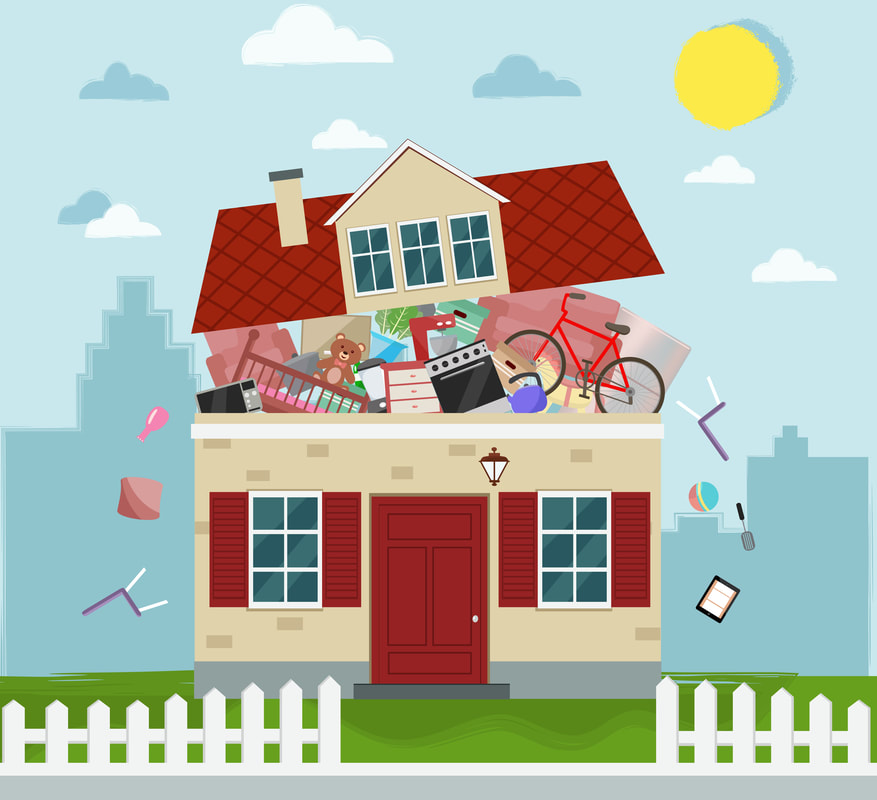Much like ‘OCD’, the term ‘hoarder’ has become commonly used, with people casually declaring, “My mum’s a hoarder, her loft is full of stuff.” Or, “My husband never throws anything away, he’s such a hoarder.” But is this really compulsive hoarding and what’s the difference between compulsive hoarding and collecting?
On a recent training course I attended on OCD and compulsive hoarding, run by Madison-Amy Webb[1], we were asked that very question. And it’s interesting to think of the differences, which can perhaps be summed up by these two photos:
From these images we can see that collectors are usually methodical in how they keep and display their objects. They value their collections and take pride in them, getting enjoyment from looking at them and storing them, and sometimes from showing the objects off to others.
Compulsive hoarders, on the other hand, keep and are unable to discard large numbers of objects that appear to be useless or of little value. This inability to get rid of anything means that living spaces become so cluttered they’re unable to be used for their original purpose (for example taking over space on sofas and chairs, on beds, on kitchen worktops etc). Unlike collecting, hoarding brings no enjoyment with it but is distressing and disruptive, sometimes preventing the person from carrying out routine daily tasks safely.
Psychologically, there is another significant difference between collecting and compulsive hoarding: hoarding can be triggered by a traumatic experience. For some, experiencing a trauma they have no control over leads to a compulsion to save items, in an attempt to save themselves or others from re-experiencing the trauma, and to reduce their fear of death. Those who exhibit compulsive hoarding behaviours may have other mental health issues too, such as depression, anxiety, bipolar disorder, eating disorders and social phobia; as well as other physical and social issues.
Unsurprisingly, this complexity means the treatment for compulsive hoarding can be lengthy, and may require co-ordination between multiple people and agencies. And the goal of therapy won’t necessarily be to eradicate the hoarding behaviour, but to reduce it in order to make living spaces safer and to improve personal health.
With this in mind, it’s clear that mum’s full loft doesn’t mean she’s a compulsive hoarder – perhaps she’s just sentimental and likes to keep mementos. Or maybe it’s that hoarding should start being viewed on a spectrum so that we can differentiate between people with hoarding tendencies and those who are compulsive hoarders.
[1] Madison-Amy Webb is an accredited BACP counsellor at Transitions Counselling - http://www.transitionscounselling.co.uk




 RSS Feed
RSS Feed